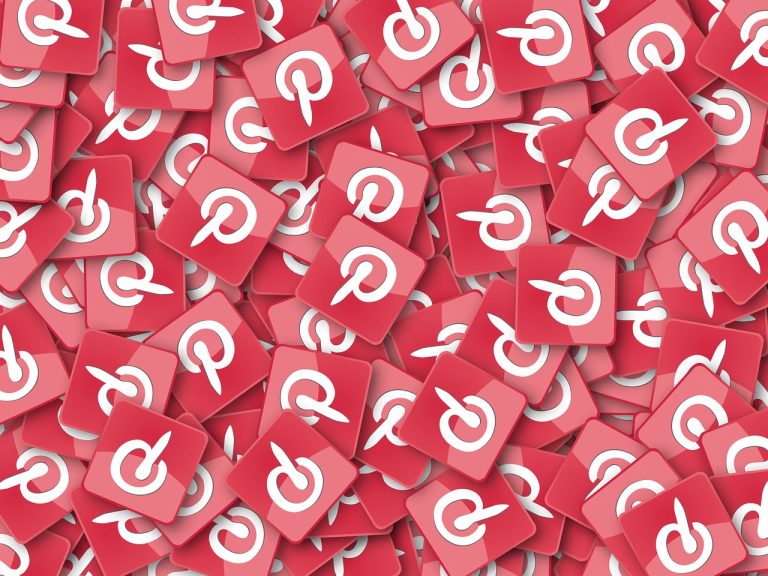A Secret Method for Selling a Lot of Books
Today’s guest post is by author and promoter Nick Thacker. He guest-posted earlier this year to great response on the topic of networking, so I am letting him hog a little more space here on Live Write Thrive to share some more great tips.
When I pitched this post originally, I was asked to provide insight as to what has “worked” for me as an author, as far as sales, marketing, and promotion is concerned. That made me think.
Am I really successful? How many books do I have to sell—or how many blog subscribers do I need to have—to be considered “successful?” Certainly it’s a subjective question, but I’ve had people ask me before what I’ve done to get to my current “success,” so I guess it’s time to do some self-examination.
In answering the question, I came to a conclusion—my success has not been because of a marketing tactic, promotional strategy, or anything action-based at all. On the contrary, it’s been due to a mind-set and philosophy I have regarding this new world of self-publishing: Ship.
That’s it. It’s not fancy, it’s not elaborate, and it’s not difficult. That’s why it might be hard to believe, but it’s the truth—it’s led to a steadily increasing income stream for me every month, month over month, since January.
Shipping is something every single successful author and/or publisher—no matter who it is—has done, and all it means is that they’re getting their stuff to market. They could be “shipping” a book once a year, once every decade, or once every week, but the result is exactly the same each time: if there’s no product on the shelves, there will be no sales. Period.
Keep the Product Moving
I took this “strategy” to heart when I started microbusinesses throughout college. I knew I didn’t have the funds to do extensive focus groups, R&D, or testing—I had to dream, create, and ship as fast as possible. I was open about it, telling any of my clients and customers that this was a work-in-progress, and if they needed help or had a request, or found a bug, to let me know.
When I started writing, it was the same mind-set that got me here (one full-length nonfiction book, two shorter “novella”-type nonfiction books, and a three-part series of short guides, all “shipped” and currently selling). I try to publish something every month that people can buy and read. I’ve got a novel on the way (currently being professionally edited), and another set of short stories waiting in the queue.
All of these things are little “microbusinesses” that are independent, yet complementary, income streams for me. Trust me: it adds up.
The Rules
However, before you start raiding the hard drives and dusty drawers for your old unpublished manuscripts, snippets, and forgotten poetry anthologies, here are the rules. I’ve set these “rules” for myself, in my own work, but many authors would benefit by following some version of them.
- Don’t publish trash. Period. That’s it. Ask yourself honestly: “Would I enjoy reading this, and not feel ripped off if I paid money for it?” Get it edited, send it to beta readers, join a critique group—whatever. I have a mailing list (see my byline) that I often “tap” for help in this area—since I can’t afford my editor for every little project I want to publish, I often send out a quick e-mail offering a free copy of the book in exchange for a read-through, critique, etc.
- Make it look nice. This, in my opinion, is part of #1. However, I see so many possibly great books (content-wise) being published that will never make it onto my bookshelf, because of the way they look. Here’s the deal: People don’t judge books by their covers, except . . . oh wait. They do. Spend $200-300 making your covers look awesome, or check out a few Photoshop tutorials and do it yourself. It doesn’t need to be fancy (in fact, less fancy is probably better anyway), but it needs to visually “pop,” be easy to read, and be consistent with any other books in the series, or at least with your own brand.
- Plan ahead. You can’t expect to “secretly” release a book and have it take off—it can happen, but it’s not likely. Instead, take a day off and research the free Kindle/ebooks sites, figure out what sort of lead time you’ll need to give them, and prepare any other “launch week” marketing—things like e-mail blasts, guest blogging, etc. Having a prewritten set of Tweets, Facebook updates, and any other short “blurb”-like updates is also a good idea. You don’t want to spam people, but it can save a lot of time to have these things ready to go.
- Use in-book marketing. One of major benefits we have when publishing ebooks as opposed to print books is in-book marketing. While we can drop in a quick one-page blurb or even a short preview at the back of any book, ebooks give us the capability to include actual clickable links within the text. For my nonfiction work, I use this feature extensively—I cross-reference my series titles, other books the reader might be interested in, and even blog posts and external resources that might provide extra help. I can turn a reader into a fan, and at the very least, they like the additional content.
- Your books are your business. Business as in, “your income stream.” Start viewing your books as a business model—it doesn’t have to consume the fun part of writing, or sap your creativity, either. Just start understanding that every word you write serves a purpose, either to directly bring you income, to help hone your skills, or to build your readership. Think in terms of business—you need to be consistent, you need to work to constantly improve, and you need to have a good grasp on the market (your readership, and their wants/needs).
Following These Rules Makes a Difference!
These are my rules, but you’re free to use them in your own career. I believe we all have these rules, whether we realize it or not. If it helps, think consciously about your own and then write them down—post them up somewhere in your writing or working space, and refer to them often.
Having a mind-set like this is honestly the largest contributor to any success I’ve had thus far. I view the rules as a dynamic, ever-changing philosophy—not a hard-and-fast set of stringent guidelines. It’s made a huge difference in my writing, and it’s made a huge difference in my monthly income as well!
What are your thoughts? Do you have anything to add to or change these rules? Leave a comment below and let’s get the discussion started!
 Nick Thacker writes about writing, blogging, and publishing, and you can check him out on his blog. Be sure to grab his new book, Welcome Home: The Author’s Guide to Building A Marketing Home Base, and grab the newsletter!
Nick Thacker writes about writing, blogging, and publishing, and you can check him out on his blog. Be sure to grab his new book, Welcome Home: The Author’s Guide to Building A Marketing Home Base, and grab the newsletter!












Excellent advice. My husband and I started a business 20 years ago, and many of the same things apply, including patience. So many artists of all kinds, including writers, think they’re going to produce a masterpiece and they’ll be famous, just on the merits of the work. While that would be nice… it ain’t gonna happen.
I have worked very hard in 2012 to get 3 books to market between July and last week, so there’s something else for my readers to buy. I have another novel coming out in Jan, probably its “book 2” in Feb or March, and a non-fiction book in April. I’m not sure I can do something monthly, but I’m aiming for 4-6 things a year, plus an active, informative blog, to keep readers interested.
The cover issues is my pet peeve (ok, good content, too, but that’s harder to push on people – either they’re actually good or they aren’t, and some aren’t going to be objective about their own work). SO MANY covers are just so very bad. And the cost is really minimal – IF you see writing as a business. You have to invest in your business! NO business starts for nothing. You might start it on a shoestring – put that shoestring into a great cover by a professional.
Hi Jennings!
Yes, this is a common dilemma faced by artists — I still think (hope) in the back of my mind that my NEXT book will be the “big one…” You’re right. It ain’t gonna happen!
That’s very true, too — the cost of a GREAT cover is so much smaller than many authors figure, and there’s really no excuse to NOT get one made!
Thanks for the comment!
Nick
Yes, the cover is the problem. People pick up a book and say, “Look at this cover, isn’t it awful!” I look and can’t see anything particlularly awful about it. Or they say, “Wow! What a wonderful cover!” and I can’t see it. It’s as if the whole world belongs to some secret “taste club”, but I was never admitted. Maybe I missed the memo.
I’d be willing to spend $200-$300 on a cover if I knew how to distinguish good from bad. With my first thriller, St Patrick’s Day Special, I spent (maybe 6) months working on the cover design with “expert” designers without much success. The cover I finally settled on was pretty much my own design, built from a photograph taken on my kitchen table.
I believe that if you truly think a cover looks great, go with it. What I DON’T agree with is when an author just gives up and claims it’s “good enough.”
There’s no reason to settle, especially when it comes to book covers — and since Kindle self-publishing allows us to switch out covers as often as possible, it’s pretty easy to “test” a few different versions as well!
Thanks for the comment — talk to you soon!
Nick
A well-known blog recently had a feature on the fact that many cover designs have common elements or effects lately. For instance a picture of a woman reversed on another cover wearing a different colored dress. I think the specific article was addressing concerns in the Romance genre and specifically, though I am not positive of this, in the self-publishing field. So even if you pay for a cover, you may be getting a cobbled up version of something. The truth is, if you do your own cover, sometimes it will be a success, sometimes blah, and sometimes awful. I have gotten two beautifuls and a cute so far.
Your books are your business! Yes! I think it was Dean Wesley Smith who said, the best marketing you can do for your book is to write another book.
My husband and I created Wayward Cat Publishing this past summer to release my first two books. We invested in the website and Bowker’s ISBNs. At this point, I’m not sure hubs would be willing to invest in covers. I think we’ve done very well ourselves, so far. But if I make any money, I’d certainly look into paying an artist.
Thanks for the great post! Back to work!
Awesome — I love Dean Wesley Smith’s stuff, and you can tell by his success he knows what he’s talking about.
I believe every author should “invest” in covers, but that doesn’t necessarily have to mean money. You can spend some time going through some Photoshop tutorials or you can hire someone (my company, Turtleshell Press, is very reasonable) design them for you.
Thanks for the comment, and I’m glad you liked it!
Nick
A really cogent analysis, and good advice for books that have obvious ‘benefit’ value to readers, on which to build. Whether they would work for one that is more ‘idea and philosophically’ based ( as is mine) I wonder? I suspect there are applications but they need to be dug out of the content itself.
Philippa Rees
http://www.philipparees.com
Love author’s who share what they know. Nick’s 5 rules add up to – use common sense, something many of us fail to do. Creating a fan base is much more difficult than most of us realize when we start our writing careers and it is easy to overlook the basics of marketing when there are so many social marketing sites that attempting to optimize them can overwhelm us. I will print Nick’s rules and keep them where I can see them.
Thanks for the tip.
Very true, I try to use common sense as often as I’m able — it’s helped me quite a bit so far!
Thanks for commenting!
Nick
Hi Philippa!
Thanks for commenting — I agree that not all marketing strategies for books can be reduced to a formula, but also note that even with a fiction piece, the “benefit” may not be advice or help, but simply entertainment — a different, yet still VERY important — benefit in itself.
I have a certain selection of fiction writers whose work I’ll buy no matter what because I KNOW they’ll offer the same entertainment benefit that they always have.
You think this would be common sense, but I see the ‘rules’ broken all the time.
Great post. 🙂
Haha, very true — too bad it’s not (or maybe it’s good for those of us “in the know”…)
Thanks for the great points you made Nick:) I’m doing #1 right now and working on getting a good book cover done as well. So I guess I need to write down what I need to do for the last 3. Your post is a helpful tool to come back to…thanks so much !
Awesome — glad you liked the post, and thanks for commenting! Let me know if you need any help with the book cover!
This is inspirational, Nick. Thank you. Lots to think about here. C.S., thanks for sharing it here.
Sandy Beckwith
Nick sure points out the difference between being creative with putting a story together and being creative with getting it noticed. Thanks.
I found your piece very interesting as I learn this business. Your rules are simple and to the point but flexable to the situation. I found that even giving away free books won’t bring you readers! I will use your tips to get better! Thanks
Are all of you self-publishing? I see no discussion here of agents, publishers, etc. And are you strictly digitally publishing, or also producing physical books?
I am a dinosaur, so when I see the word “ship” I think “boxes, stores, shelves.”
I could be wrong; I so very often am.
I hope that you will take a moment to explain what you mean. It will be greatly appreciated by one aging Ludditess.
Cheers,
Dina Leah
A lot of writers, like myself, are both traditionally published (nine books contracted/published) and self-published (three ebooks/ one also in print). I have two agents, one for an ebook published with an ebook publisher. So there are many ways to go and lots of differences in opinions. You may want to read the guest blog post on this site a while back from Joanna Penn on whether you have to chose either/or or can you be both an indie author and a traditionally published author. I have had lots of posts all year long on this topic under the Writing for Life category, so you may want to read some of the posts.
I believe Nick is talking about “sending” your work out in some manner as regards “shipping.” I f you keep producing work and putting it out for people to buy an read on a regular basis, you will grow your fan base and grow your sales. I have certainly found it to be true.
Thank you, Nick, for your wonderful advice and also everyone who contributed. The cover: That has been a bitter test for me. My first cover is awful IMO but the feedback has been mixed. I had a second person come forward and offer to redo it for me to the specs I requested and still waiting on that to be finished.
I released my first novel strictly on my own, which for the time being is still on Amazon, and as the months have past I have learned I had NO clue what I was doing. The information that is available today for aspiring authors is staggering. It has taken me months for filter through and find what is useful and what is not.
I have actually switched my focus to short stories as I sifted through the muddy waters of information and found that even “shipping” that direction has brought me unexpected success. So I have learned to be open to many opportunities and “Not keep all my eggs in the same basket” as the old saying goes.
Good comments! I find too that having many books “out there” shows depth and validity to my reputation as an author. I have so many different formats for many of my books, which gives my writing a better chance to be discovered. One thing I’ve learned is to give away as much free product as possible. My novel Intended for Harm is always free on Kindle, and I’m finding it brings new fans every week to my books. This was a tip I learned from another guest blogger who posted here earlier in the summer.
Hi, I am agree with you about everything, and I would like to add that you should target the right audience.
Excellent post with great points. My ebook, Wrong Place Wrong Time is my first and with the marketing I do on twitter, blog and facebook etc it has been ranking highly on Amazon thankfully. Also thankfully, my brother is a GD and designed my cover…
Thanks again for the interesting post.
Some great advice in this post, thanks.
I’ve written a couple of funny, contemporary fantasy novels. They sell moderately well when I put in marketing effort and then they nearly flat-line when I stop… finding the balance is a challenge.
?Do you mind if I quote a few of your articles or blog posts
as long as I provide credit and sources returning to
your site: https://www.livewritethrive.com/2012/10/29/a-secret-method-for-selling-a-lot-of-books/.
Please let me know if this is ok with you. Thanks alot 🙂
I will add one: Never ever ever publish sh*t. Too many do. I did. Never again. It is a short road to undermining your business.
Marketing in today’s world seems to be the answer to getting your book out there and noticed. Providing that you know who and where you are marketing your finished product. I find it is better to stick to a particular niche. Build relationships and do networking.